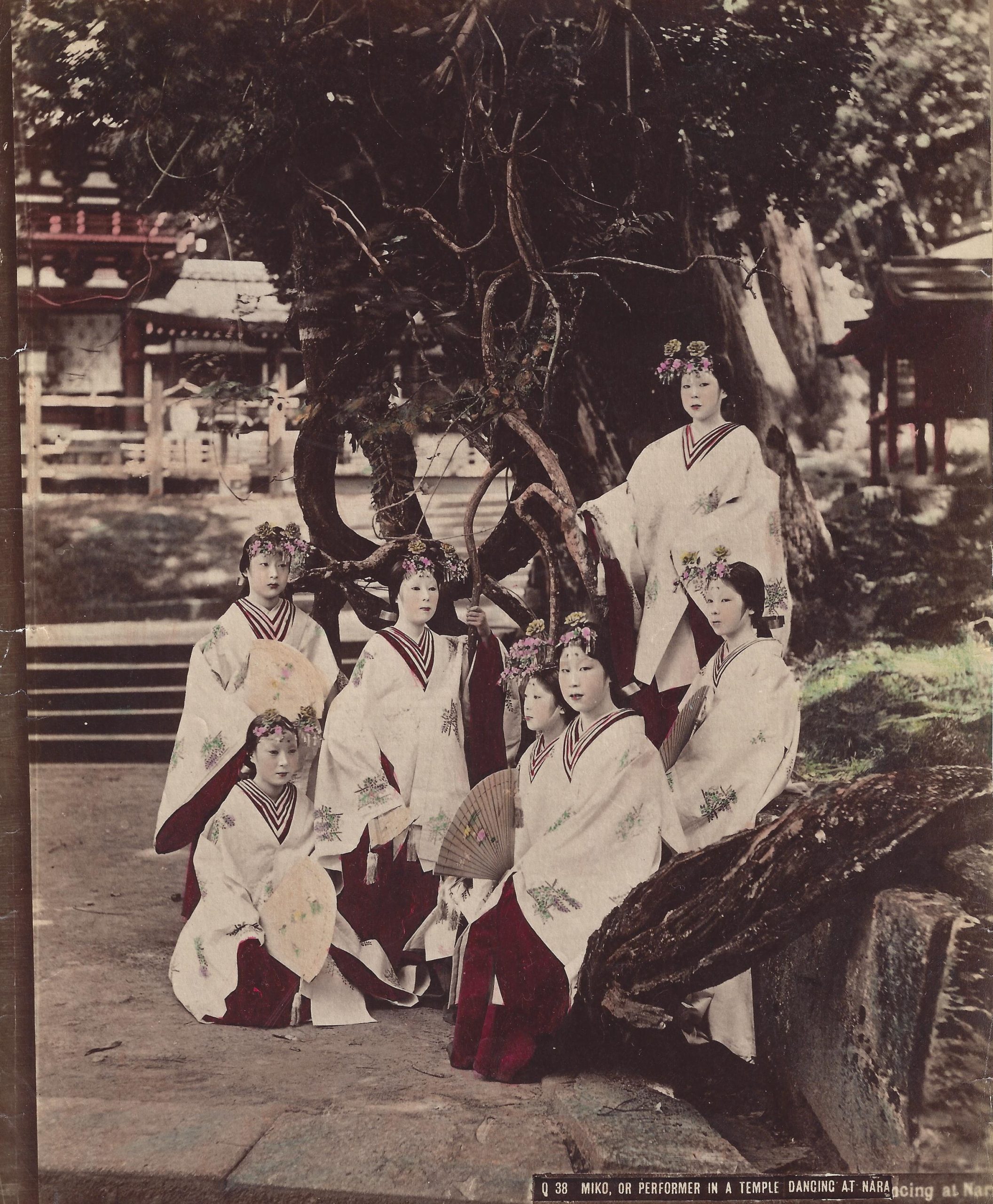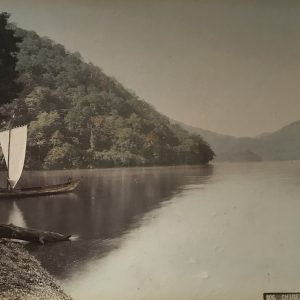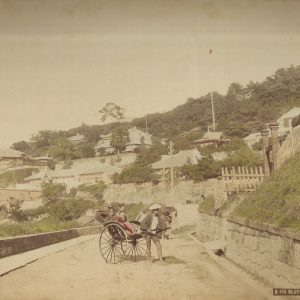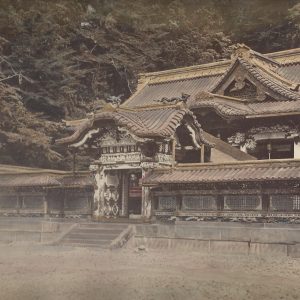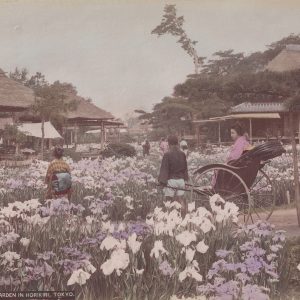Miko or performers in a temple, Nara
300,00€
Hand coloured albumen print
Kusakabe Kimbei
Circa 1890
D. 26,4 x 21,4 cm
Description
Attributed to the prestigious studio of Kusakabe Kimbei, this photograph bears witness to the flourishing production of coloured albumen prints during the Meiji era. Kusakabe Kimbei was one of the most renowned photographers of the Yokohama school. His studio was one of the most prosperous in the last years of the 19th century. Initially trained by Felice Beato and Raimund von Stillfried, two European photographers who had settled in Japan, he was influenced by the aestheticism of the colourised views that these two photographers were largely responsible for popularising. In 1880, he opened his own studio in Yokohama, and was able to buy Beato’s collection, which is why it is difficult to attribute a photograph to him with certainty. His studio was a great commercial success, particularly thanks to the views embodying a dreamed-of Japan, and intended to be collected by European travellers.
This outdoor photograph shows miko in a temple garden in Nara, one of the country’s ancient capitals. Particularly important in the Shinto religion, the miko are young women who serve the shrines. During the Shinto ritual, the miko assist the priests during the ceremonies, which are punctuated by dances.
Grouped under a tree, the young women pose in contrasting attitudes, and two groups clearly face each other, creating a dynamic play of glances. The work on the position of the bodies in space brings vivacity and dynamism to this almost theatrical composition, despite the long exposure time during which the models had to remain static.
The use of colour emphasises the refinement of the clothes and their patterns. Under the impulse of European photographers who settled in Japan when the treaty ports opened, clothing became a subject in its own right in Japanese photography. Raimund von Stillfried was one of the first to illustrate this trend around 1875, compiling a large number of views in albums under the title Views and Costumes of Japan. This title is evocative of the interest in Japanese clothing, such as the ritual clothing worn by the miko. This traditional Japanese dress corresponds to the European taste for exoticism and their vision of a dreamed-of Japan, embodied by the souvenir photograph.

